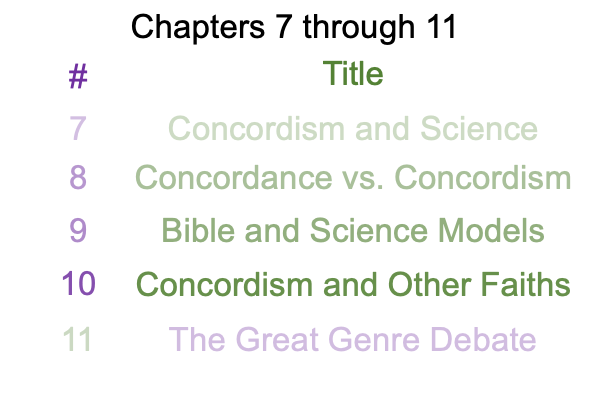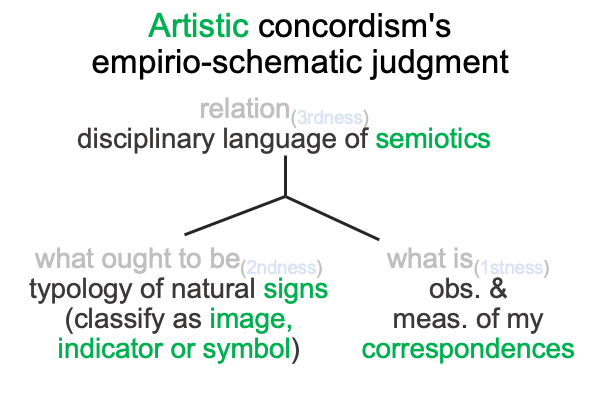0119 Allow me to consider chapters 7, 8, 9 and 10 once again.
Here are the titles of each chapter.

0120 Oh, I included chapter 11, because, if the scholarly and religious elites of the Ancient Near East were time-transported to our current age, then they would be doing the same as the “other faiths” covered in chapter 10. They would be comparing their myths and traditions and wisdoms to modern science. They would be asking whether their scriptures are signs of the incredible counter-intuitive realities that science has revealed in the past 400 years.
And, they would be running into the same problem facing Christians, concerning the Primeval History (which for this examination, only includes Genesis 2.4 through 11). All the written origin myths of the ancient Near East depict the creation of humans as a recent event. Yes, the myths proclaim that humans are fashioned by differentiated gods for various (often technical) purposes, just like Adam and Eve. The king lists of various ancient cities look just like the genealogies in the Primeval History. Or is it the other way around?
Anyway, they would complain, “What is this business about humans being around for 250,000 years before the start of our great civilizations? What gives?”
0121 Well, once the question is posed, then some Christian-science type of genius, like Hugh Ross, might consult the diagram of artistic concordism as an empirio-schematic, which appears below, and make a suggestion.

0122 His suggestion says, “Yes, all the written origin stories of the ancient Near East, along with the Bible’s Primeval History (yet, excluding the Creation Story) agree that humans are fashioned by one or more gods within the past, say, 10,000 years. Okay, maybe 8,000 years.
“I observe your correspondences as phenomena (what is in the above diagram). And, I find that these stories might be classified as indicators (what ought to be) of… um… the start of humanity. Of course, this is impossible, because archaeology, natural history and genetics agree that tool use, fossil remains and DNA samples and so forth, demonstrate that there has been no change in humans for the past 250,000 or so years.”
0123 Then, those ancient time-travelers reply, “What about us? We are the change, that we have been waiting for.”
Ross thinks, “Where have I heard that before?”
The ancients continue, “Obviously, if what you scientifically call ‘humans’ lived long before the times that our myths indicate, then, our myths indicate that these ‘humans’ are born again and fashioned into the ancestors of our civilizations. That is why our ancient myths do not indicate ‘humans’ before their creation by our gods. Rather, our origin stories indicate humans as they were created by our gods.”
0124 Ross doesn’t quite know what to make of this, so he sticks to the schematics and says, “Well, according to the disciplinary language of semiotics, I should classify your correspondence as an indicator. Indexes point to their referents. So, your correspondence is pointing to the start… or maybe… the potentiation of civilization itself, rather than of humanity. If that…”
At which point, the hard-concordist Christian standing next to Ross says, “Did y’all just say that humans are ‘born again’? How crazy is that?”
0125 And, at that moment, in this bizarre scenario, Ross looks up at the sky, a dome of bronze, hammered into a translucent patina by the angels, and Michael takes a big old mallet, and strikes the dome of the heavens. Boom!
In the fashioning of Adam and Eve, humanity is born again.
The stories of Adam and Eve indicate the start of our current Lebenswelt.
Our current Lebenswelt is not the same as the Lebenswelt that we evolved in.
This is what the written origin stories of the ancient Near East indicate.
Humanity starts with our current Lebenswelt.
0126 In order to fully appreciate this fictional portrait of an exercise in artistic concordism, the reader may consult The First Singularity and Its Fairy Trace… or An Archaeology of the Fall… by Razie Mah, available at smashwords and other e-book venues.
